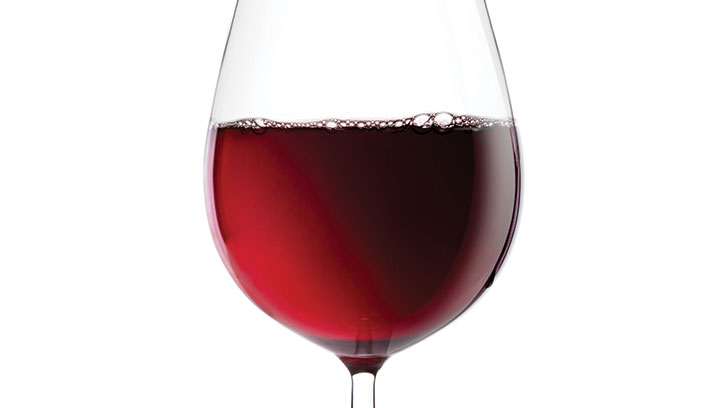Resveratrol Revisited
Diet & Nutrition | RESEARCH
The health halo surrounding the polyphenol resveratrol—and the fact that it is present in red wine—has received plenty of press, much of it citing resveratrol’s benefits related to diabetes, cardiovascular disease, and inflammation. But is drinking red wine to obtain these benefits a good idea? And how much does one have to consume in order to obtain them?
Resveratrol was first isolated in 1939 from the roots of the white hellebore, a poisonous perennial plant. Since then, resveratrol has been identified in many other plants and fruits, including grapes, blueberries, plums, and peanuts. Red grapes in particular contain high concentrations of resveratrol in their skin—up to 100 mg/g (Singh et al. 2019).
Both cis- and trans-isomers of resveratrol occur naturally, although the trans form is usually more biologically active than the cis form (Weiskirchen and Weiskirchen 2016). That said, there are conditions that may increase the bioactivity of the cis form. Resveratrol is also a phytoalexin, meaning that it is synthesized by plants in response to external stressors, such as ultraviolet light and pathogenic fungi (Tomé-Caneiro et al. 2013).
Thus, it should come as no surprise that it can be difficult to determine the exact amount of resveratrol in a given food product. The geographical area in which a plant is grown, harvesting season, infections, and other factors impact the amount of resveratrol synthesized in a plant. In red wine, the wine-making process itself also affects the amount of resveratrol present in the final product. Red wine contains an average of 1.7–1.9 mg/L of trans-resveratrol, but it can contain as much as 14 mg/L or none at all (Tomé-Caneiro et al. 2013).
Resveratrol has exhibited a wide range of beneficial properties with in vitro and in vivo models and in trials involving megadoses of the compound. Perhaps most important is resveratrol’s ability to act as an anti-glycation and antioxidant agent. Glycation is a reaction that occurs between proteins and reducing sugars, which leads to the formation of advanced glycation end products (AGEs). These AGEs can accumulate and cause cell and tissue damage, and they have been implicated in conditions such as diabetes, cancer, and neurodegenerative diseases (Galiniak et al. 2019).
Resveratrol can also act as an antioxidant due to the presence of three hydroxyl groups in its chemical structure. Oxidative stress is caused by the production of reactive oxygen species (ROS), and like AGEs can increase risk of cancer, diabetes, cardiovascular diseases, and other such conditions (Galiniak et al. 2019).
Despite these promising findings, fewer studies have examined the effectiveness of dietary resveratrol on human health. One prospective cohort study followed 783 residents of Tuscany aged 65 and older over a period of 9 yr. This study found no correlation between dietary intake of resveratrol and inflammation, cardiovascular disease, cancer, or mortality (Semba et al. 2014).
Another limiting factor for dietary resveratrol is its low bioavailability. Resveratrol undergoes extensive metabolism in the liver and intestines, and its oral bioavailability has been estimated to be less than 1% (Walle 2011). Moreover, dietary intake of the compound is relatively low compared with that achievable with supplement use. One study in Spain found that the average dietary intake of its subjects was around 9.33 mg/day, with red and rosé wines providing over 98% of that intake (Zamora-Ros et al. 2008).
Resveratrol appears to be safe in doses up to 5,000 mg/day, although mild side effects have been reported with amounts over 2,500 mg. Clinical trials of resveratrol supplements have generally used doses ranging from 500 to 5,000 mg/day with both positive and negative results, and some have suggested an ideal dose of 1,000 mg/day based on extrapolations from animal studies (Weiskirchen and Weiskirchen 2016).
While it is nearly impossible to consume a clinically effective amount of resveratrol from diet alone, it is important to remember that resveratrol is only one of many polyphenols present in red wine and other foods. As such, the benefits associated with red wine consumption are likely not attributable to resveratrol alone but to the combination of polyphenolic compounds. Future studies should examine the dose-specific responses of resveratrol supplements in various diseases and conditions.


